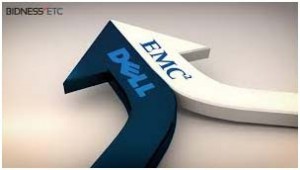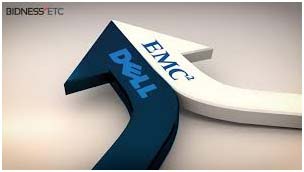Authored by bharthi amlani
Dell Technology has come into existence as the result of the Dell-EMC merger. It is going to be a collection of independent business  units tethered to each other. This $67 billion merger has created the world’s largest privately held technology company.
units tethered to each other. This $67 billion merger has created the world’s largest privately held technology company.
The newly formed company will deal in PCs, servers, storage, networking and software products. Dell Technology further holds an impressive list of assets that includes EMC storage, Dell’s PCs and servers, Wyse, VMware, RAS, Force 10 along with Pivotal software and Boomi cloud services.
There are a few things that you need to know about the new company and its priority.
Dell Technology is thinking like Alphabet/Google
The company is going to be a mix of independent units which will tethered to each other. It is mostly like Alphabet, that has many Google led independent units functioning closely with each other. The units if Dell technology will keep on functioning independent as earlier, but at the same time they will collaborate with each other to provide the integrated products such as hyper converged systems to combine EMC’s storage, Dell’s server, VMware virtualization and cloud assets for private and public sector.
There is no recent threat through overlapping products
The merger, specifically made sense as the assets (servers, storage arrays, and VMware virtualization assets) were compatible. Under the pre-merger scenario, Dell made space for EMC’s assets by agreeing to shed its software business for $2 billion to equity firms Francisco Partners and Elliott Management. It also sold its IT services businesses for $3 billion to NTT Data.
Cloud, security and storage product can be subject overlapped, but, Dell doesn’t seem in their’s immediately winding up the mood. We need to wait till the company’s future announcement concerning merging assets or discontinuing products. Till then the existing customer may relax about their ongoing deals or products being used.
The PC business will remain same
Dell’s PC business and driven development will not change and the customer will get the same level of support. The XPS, Alienware, Inspiron PCs and the ongoing research and growth programs will keep going. On the other hand, dell is planning to present groundbreaking products at CES next year, and displays will be a big area of focus for Dell Technologies. In future,the company will specifically focus over virtual reality and augmented reality.
Rack-scale infrastructure and all-flash array will be the new priorities
All flash storage sector is developing with tremendous speed of 100% a year, and rack-scale computing/infrastructure supports server structure improvement and processing speed of the data center; so no doubt, Dell will pay its long term focus over these sectors.
The strategy is to make a data center configured like one giant server, and the rack-scale structure will help reduce power bills and cut inefficiencies in processing and data movement. Dell already offers servers for rack-scale infrastructures.
The VMware virtualization tools are a particularly strong asset to achieve that goal. Distributed computing is important in rack-scale architecture, and Dell Technologies will put VMware and other virtualization and provisioning assets on top of Hadoop and OpenStack infrastructure. Hewlett Packard Enterprise and Lenovo can put VMware on their servers, but Dell will offer deeper integration.
Existing EMC users will continue
VMware and Pivotal are some of the ongoing Dell Technology assets and being used by many customers; they wont change. . VMware products figure to have higher levels of integration in Dell servers, but customers with a preference for non-Dell servers will still be able to buy EMC products and support. HPE and Lenovo are notable partners with VMware, but it’s not clear if the partnerships will remain in place.






